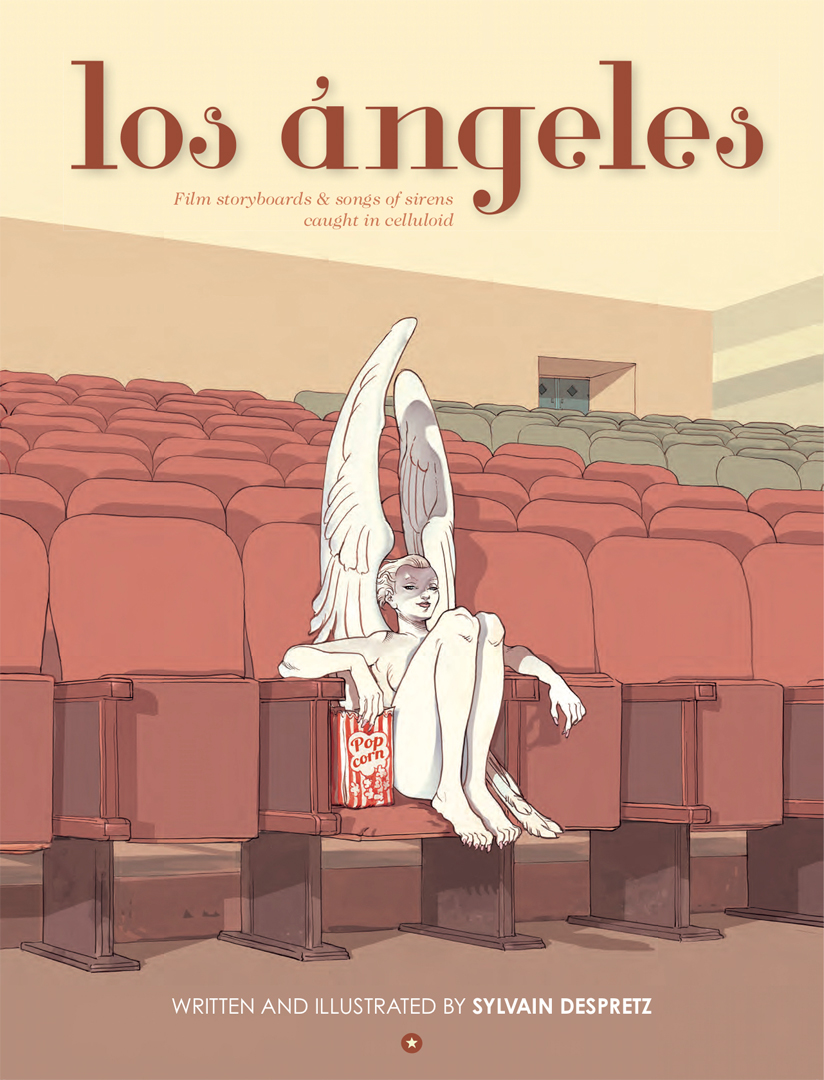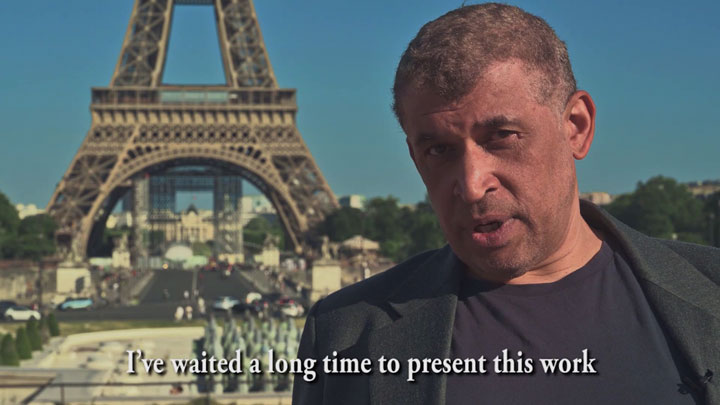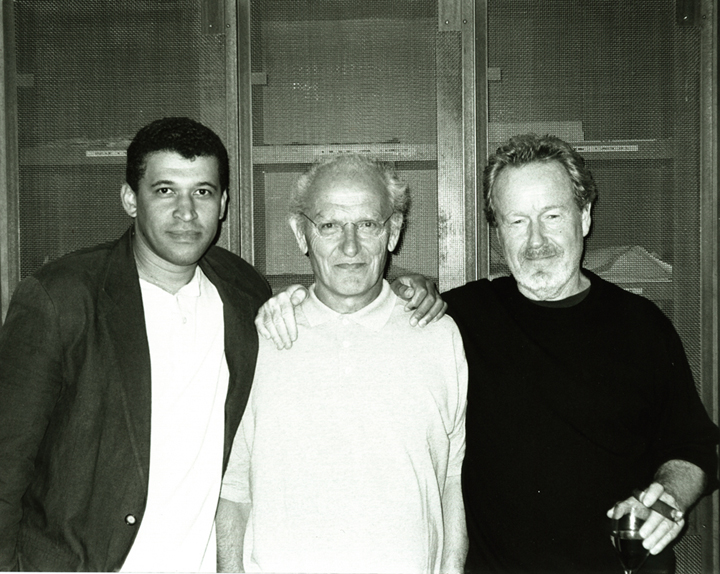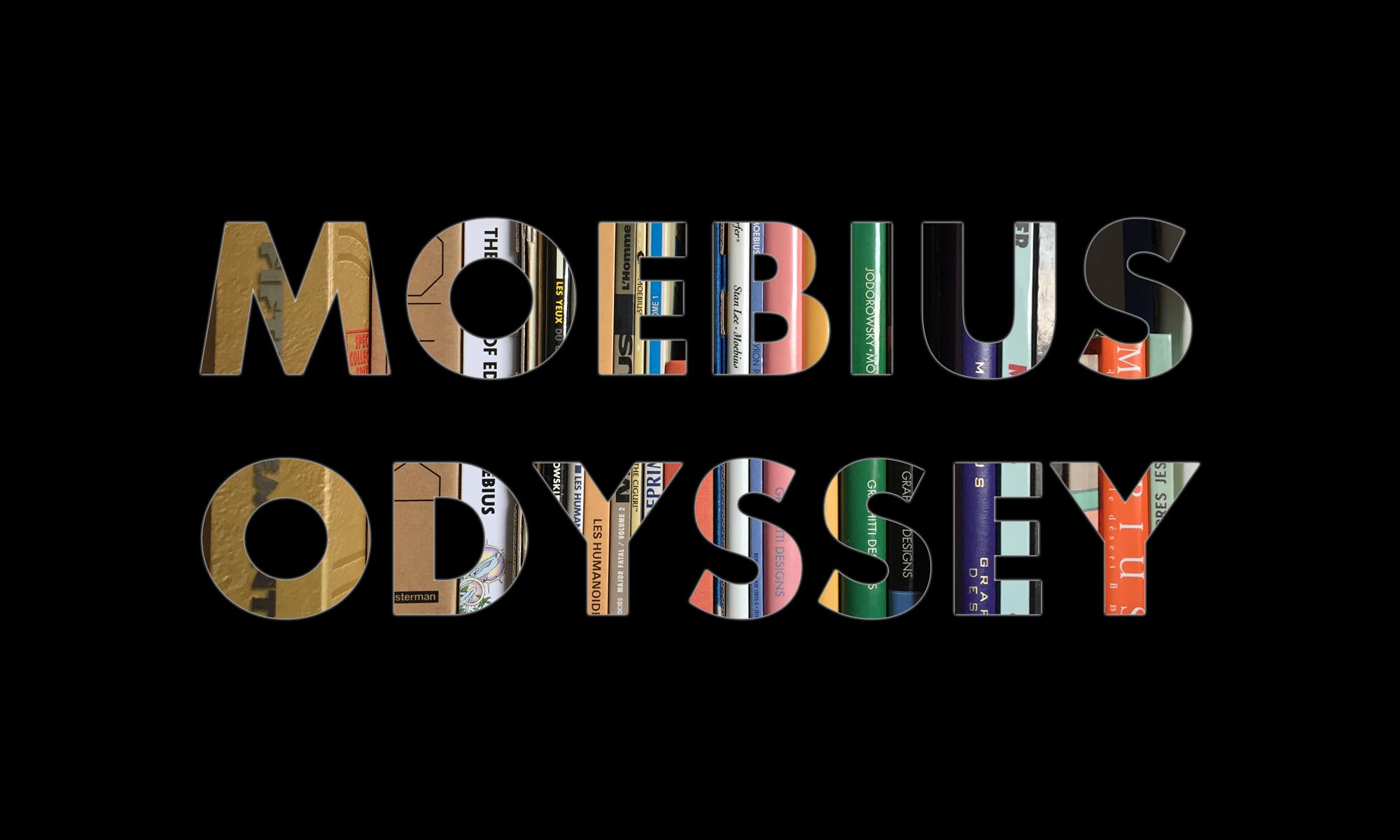We are lucky to be in the company of Sylvain Despretz, storyboard artist, filmmaker and musician who has worked on such films as The Fifth Element (1997), Eyes Wide Shut (1999) and Gladiator (2000) and learned firsthand from such film directors as Luc Besson, Ridley Scott and Stanley Kubrick to name but a tantalising handful. Sylvain is releasing an art book of his work later this year after a successful online crowdfunding campaign titled:
‘Los ángeles: film storyboards & songs of sirens caught in celluloid’


(As we are currently in a pandemic the following conversation was held virtually for your safety…)
MOEBIUS ODYSSEY: Bonjour Sylvain, hope you are safe in Paris! Let’s start off with a question that many reading this would probably like to know… When did you first meet Moebius? What was it like working with him and becoming his protégé?
SYLVAIN DESPRETZ: I was about 14 years old when I met Jean Giraud. I call him “Jean Giraud” instead of Moebius, because at the time, he had barely done his coming out as Moebius with Arzak. I mostly knew his work from Blueberry, which I read in Tintin Magazine every week. I met him in a building that’s less than 10 minutes away from where I live today called “Palais de la Mutualité”. It was during one of those conventions — the first of its kind in France in those days. I would go an loiter because I had no money to spend on books or drawings. He drew a sketch for me of a Mexican with his big hat.
The second time I met him was in New York. I was in my twenties and I was working for Neal Adams at the time, in his studio called Continuity Graphics. I was walking past the bookstore Forbidden Planet one day and saw a sign in the window that advertized a “meet and greet” with Moebius. Rather than just show up with a crowd of people, I thought this time, I’d get a private audience. I had had quite a bit of experience of the world of comics and fans, and I knew that no significant meeting could occur amid a crowd of hungry people… So I went inside the bookstore and left note – a letter…Addressed to him. In it, I said I was a French artist marooned here in New York, working for Neal Adams, etc. and I would like to buy him a drink or a coffee.
On the day, I received a phone call from Claudine, his wife at the time, who said, “we got your note, we’ll be done with the signing around 3:00 PM, come meet us afterwards.” So I went, and got to spend some time with them that day. And I learned something remarkable: he was no longer living in Paris: he was living in Los Angeles.
It so happens that I was also angling to move to Los Angeles at the time… We chatted, I kept his contact, his address, etc.
Within a couple of years, I had met Ridley Scott (I describe that meeting in my book) and almost as soon as I did, I moved to Los Angeles. There, I saw Moebius again and we got to know each other better. He gave me some kind advice about my work, etc…
Within a few months, a project came up that he couldn’t do on his own for reasons having to do with time, and he or his agent asked me if I could handle the load — and I started working with him. That became a motif — suddenly, he’d hand me opportunities to help him on stuff he didn’t have time to do. I would set up the perspective, or the layout, or he would do a layout and I would pencil it, he would go over it, and I would ink it, and he would give it his touch over it, etc… I became his apprentice.
Once he got to know me better, he gave me some advice about my work that wasn’t so kind: one day, he gave me an analysis of what I was doing that was devastating. He reduced me to a complete grease spot. I felt utterly worthless. Then he said to me, “I say this because you can handle it. The majority of artists I meet cannot handle anything close to the truth so I compliment them and forget about it because their art is hopeless. When I am honest, I am brutal. But I am brutal because I think you have the potential to change things.”
From that day, the gates opened and I entered a monastic practice of the craft and I got much, much better, fast. I never wanted to go through something like that again… and I didn’t.

“When I am honest, I am brutal. But I am brutal because I think you have the potential to change things.” Jean Giraud
I developed a sort of friendship with him that lasted over 15 years. we were quite close at one time. I was also very close with his family, and am still friends with his former wife, Claudine, his daughter Helene, and his son Julien.
It was a deeply gratifying experience, and a huge part of my life. It shaped a lot of who I am as an artist even if ironically, I am more interested in film than in drawing. Certainly, if I can still make a living drawing, it is because he raised the bar so high for me.
Jean was a sort of father substitute for me. He accepted to play that game… he knew that I needed it. On the other hand, I was able to be an intellectual partner for him because we shared a lot of common interests especially in literature, metaphysics, movies, etc. And I could go toe to toe with him on all those subjects which most people couldn’t. So we had a sort of friendship. For a time. After he married his new wife, Isabelle, she started to push people out a little so it became harder to maintain a close friendship, but we managed. When he got sick, it became much more difficult. I hardly saw him at all at the end.

MO: How did you find life during this COVID lockdown? Any advice for those in lockdown to stay focused and be creative?
SD: I have had a difficult year. Demoralizing. A lot of things around me fell apart this year, and on top of that, I am stuck, unable to advance on my film about the band Brand X. It’s a delicate and tenuous project and every day that passes, the people involved are less likely to ever be a band again. Thankfully, I shot a lot up to last year, but this year is nearly all a throwaway.
One silver lining: I have been playing my guitar every day. One of them anyway. I own a rather lovely classical, nylon string guitar made by Kazuo Yairi in 1983. I have had it ever since it was made but I had stopped playing years ago. This year, I resumed and have been diligent. I had forgotten most of the pieces I could play 25 or 30 years ago, but I am building new techniques and learning new stuff and some old things as well. I spend a couple of hours a day, at least playing these days – sometimes much more than that.
I find it difficult to give advice because it is extremely hard for me to concentrate on drawing. I put it off as much as I can all the time. I go for walks. I get out and sit outdoors. I am trying to pass the time until something starts up again. I have spent a lot of time on technical details pertaining to my book – my books in the plural – since there are two of them: los ángeles and Midnight Show. It’s a lot of work, especially dealing with the text but we finally sent it to the printers a few days ago.
Maybe the pandemic was a blessing: time stopped and I was able to do the things I just described precisely when I needed to do them.
I say half jokingly that this Pandemic has provided me with a much needed alibi for all the failures of my life recently: a flailing career that was going around in circles: Covid! Lack of money: Covid! Relationship in the gutter: Covid! If I use Covid as the explanation for things going wrong, people accept it without batting an eyelash. Late on your rent? Covid…
It works.

MO: What is the inspiration behind your book ‘Los ángeles’? What can someone expect to find within it’s pages?
SD: los ángeles is a manifesto. It was born out of a need to dot the i’s and cross the t’s on the world of film because I felt after all these years working with master filmmakers that the medium had been slumping into a spiral of mediocrity, and I felt that a lot of the important messages given to us by the masters are being forgotten or overlooked. I had an opportunity to do a book about my 30 year career in film, and I decided to do more than a book of drawings, but also a book of explanations about how graphics and illustration play a role in what I call “film language”. The book is twofold: on the one hand, it shows my work as an illustrator, and on the other, it passes on a lot of the knowledge I have acquired about film language and about the work of an artist in film.

MO: Another Moebius question. Alejandro Jodorowsky and Moebius famously collaborated on Frank Herbert’s legendary science-fiction novel Dune back in 1975 (also the subject of a 2013 documentary Jodorowsky’s Dune). Although Jodorowsky was not able to realise his vision in 1975 and later directors such as David Lynch and now (at the time of writing) Denis Villeneuve is next in line to ride the sandworm, what do you think attracts so many artists to adapting Dune to screen?
SD: I have no idea. Part of me thinks it is that drawing sand is much easier than drawing complicated architecture. It seems like a joke, but I can see the appeal of approaching science fiction from a perspective of relative pleasure and little pain, in the sense that all the things you design in Dune are fairly organic and could be “simple” in a way. It’s a relief from all the other burdens of Science Fiction.
MO: In your life as an artist, what has been the most exciting project that you have had the great privilege to be part of and why? What is next on the horizon for Sylvain Despretz?
SD: Quite simply: my own film, Brand X: The Desert Years. It’s a dream project I have carried inside of me for 25 years at least, never daring to expect that I would someday have a chance to do it.
I don’t have much money, I rarely have opportunities to keep shooting, and advance, it is hard as hell to make progress, Phil Collins hasn’t returned my phone calls, neither has Joanna Lumley, both of whom I need to talk to, but there you go. When I am filming, it is the happiest I have ever been in my life.

MO: Thank you for taking the time to answer our questions and really looking forward to exploring ‘Los ángeles’…
SD: Thanks for the opportunity to speak about it. I hope the book will speak to people. I honestly think it is good value for your buck. It is densely packed and contains information that is hard to find. I am pleased with it and I “own” every word and every image in it; by that I mean that I stand by every bit that’s in the book.
‘Los ángeles: film storyboards & songs of sirens caught in celluloid’ is available to pre-order now from Éditions Caurette and slated for release in November 2020.
